Monarch butterflies are well-known for their annual migration north from Mexico or California each spring, but other migratory butterfly species also visit our summer gardens, including the American lady butterfly (
Vanessa virginiensis). They aren’t specialists like the monarch butterfly, but they do have a fairly short list of larval host plants that their caterpillars need as a food source. Many of these plants are attractive perennials that both gardener and caterpillar can enjoy. Learn more about some of these butterflies’ and caterpillars’ favorite plants below.
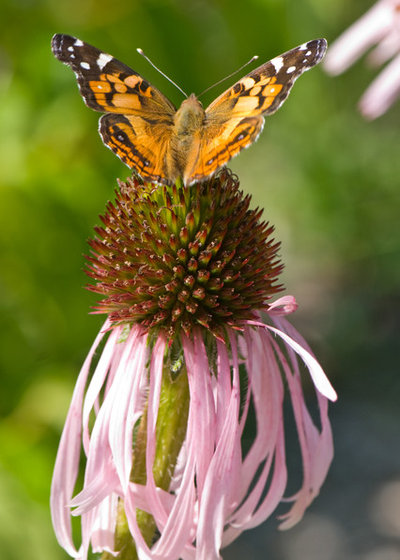
Holm Design & Consulting LLC
Family: Nymphalidae (brush-footed butterflies)
Latin name: Vanessa virginiensisCommon names: American lady butterfly, hunter’s butterfly
Distribution: North America, including Mexico, Caribbean islands and Central America, and South America
Habitat: Woodland edges, gardens, meadows, prairies, old fields and farms
Shown: An American lady butterfly visits pale purple coneflower (
Echinacea pallida).
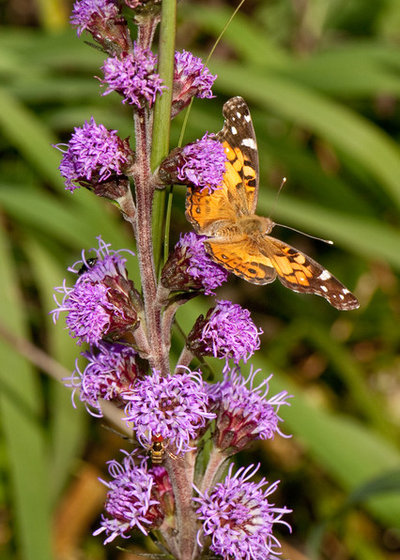
Holm Design & Consulting LLC
When to look for them: In the northern part of their range, the first adults arrive from the south at the end of May or early June, with butterflies in the southern part of their range becoming active earlier. With two, rarely three, generations in the northern part of the range, and three or four generations in the south, adults can be observed from spring until late August or early September in the north, and year-round in Mississippi and Florida.
Shown: An adult visits Rocky Mountain blazing star (
Liatris ligulistylis).
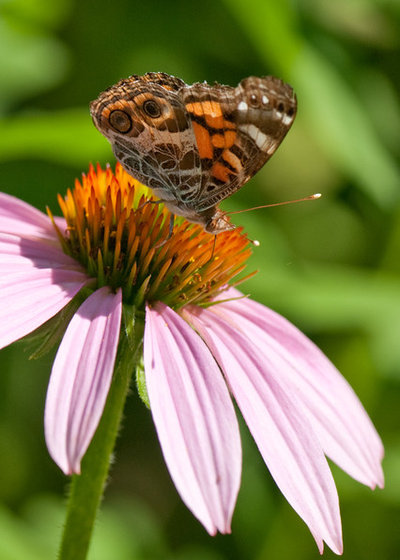
Holm Design & Consulting LLC
How They HelpAmerican lady butterflies forage on flowers for nectar in late spring and summer, and have the potential to carry pollen to other flowers, aiding in the pollination of plants.
Shown: An adult forages on purple coneflower (
E. purpurea).
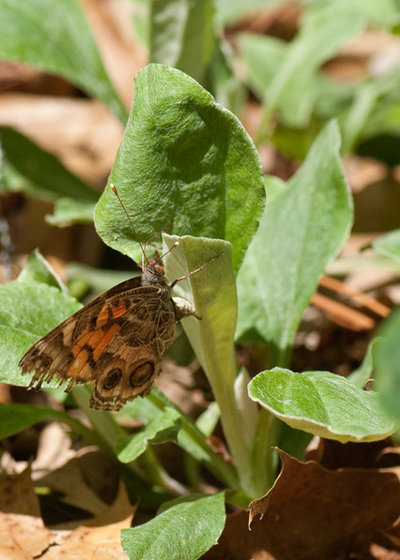
Holm Design & Consulting LLC
How to Spot American Lady ButterfliesAdults. American lady butterflies can be easily confused with their close relative the painted lady butterfly (
V. cardui). American lady butterflies have orange interior fore and hind wings, with four spots at the base of each hind wing and at least two of the spots having light blue centers. On the outside of the hind wing, American lady butterflies have two large eye spots, whereas painted lady butterflies have four small eye spots.
Shown: A tattered female lays an egg on field pussytoes (
Antennaria neglecta).
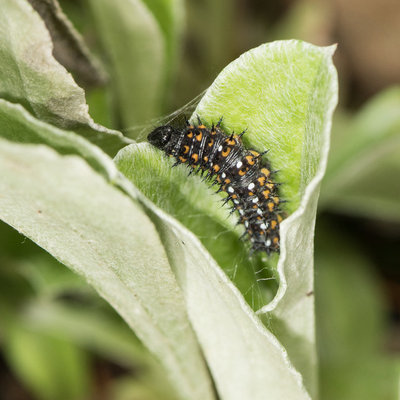
Holm Design & Consulting LLC
Babies (larvae or caterpillars). Caterpillars can have different coloration patterns; some are black, while others are rusty red. The common features are sharp spines and white spots that occur on the second to eighth segments.
As caterpillars feed on their host plants, they form a feeding shelter by tying leaf margins together with strands of silk.
Shown: An American lady caterpillar feeds on field pussytoes.
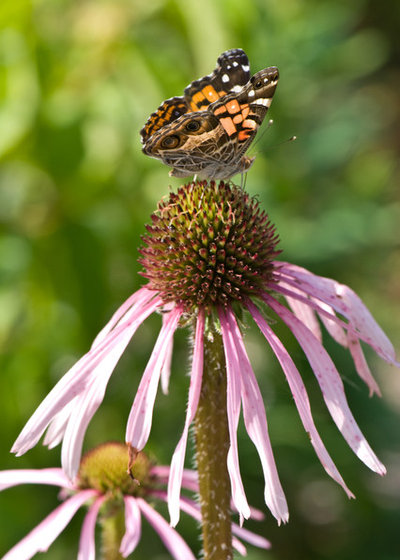
Holm Design & Consulting LLC
How to Lure ThemMaintain a pesticide-free yard. Don’t use pesticides, especially insecticides, in the garden, particularly on flowering plants or larval host plants (the plants caterpillars feed upon).
Shown: An adult visits pale purple coneflower.
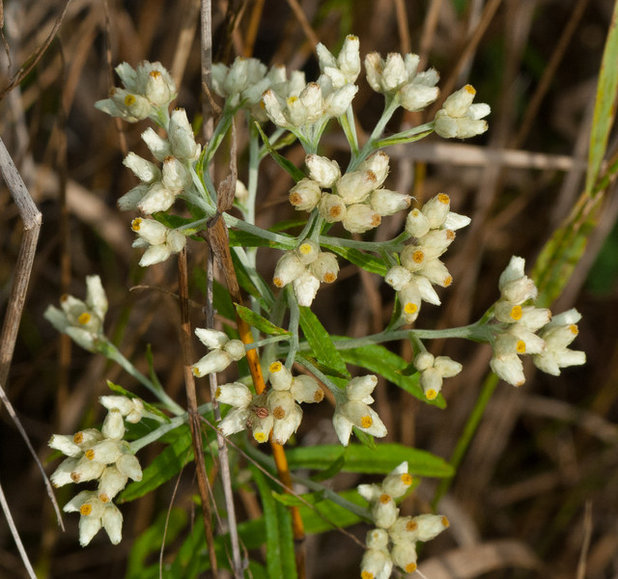 Provide larval host plants for caterpillars.
Provide larval host plants for caterpillars. Besides maintaining a pesticide-free garden and continuous succession of flowering plants, you’ll need to provide larval host plants. Caterpillars feed on the foliage of cudweed (
Pseudognaphalium spp.), pussytoes (
Antennaria spp.) and western pearly everlasting (
Anaphalis margaritacea). The annual curry plant (
Helichrysum angustifolium)
is also used as a host plant.
Shown: The cudweed rabbit tobacco (
P. obtusifolium) is one of the larval host plants of American lady butterflies.
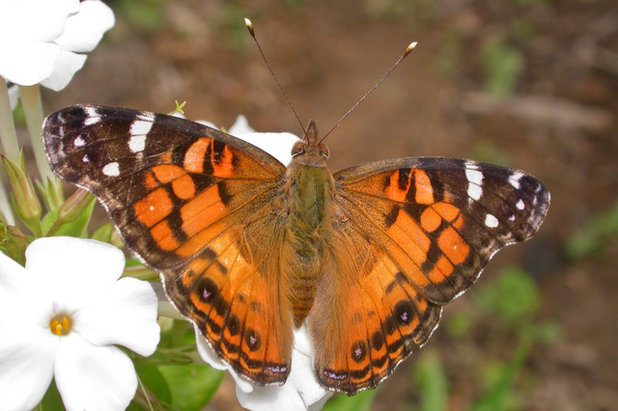
Holm Design & Consulting LLC
Offer forage plants for adults. Nectar is one of a few sources of food for adult butterflies. By providing flowering plants continuously throughout the growing season, you’ll ensure that a sufficient amount of nectar is available for adults.
Sample plant list for adults:- Late spring: Coreopsis (Coreopsis spp.), pale purple coneflower and prairie phlox (Phlox pilosa)
- Summer: Black-eyed Susan (Rudbeckia hirta), hoary vervain (Verbena stricta), milkweed (Asclepias spp.), phlox (Phlox spp.), purple coneflower and wild bergamot (Monarda fistulosa)
- Late summer and fall: Blazing star (Liatris spp.) and goldenrod (Solidago and Euthamia spp.)
Shown: An adult perches on a phlox flower.
Browse native plants for your region
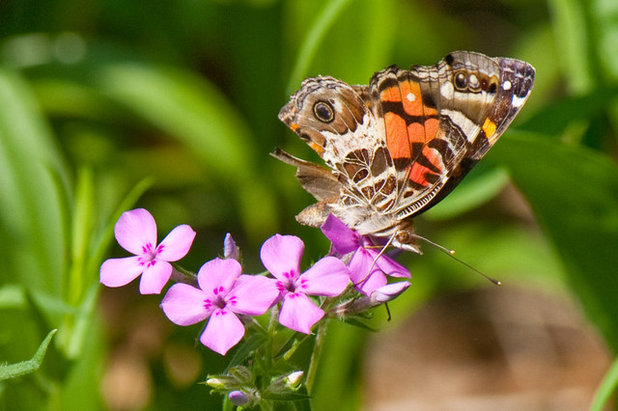
Holm Design & Consulting LLC
Life CycleAmerican lady butterflies are migratory. Adults emerging in the spring in the south fly northward to the upper Midwest, southern Canada and Northeast each year. Upon arrival, females lay eggs on larval host plants, and the first generation of caterpillars emerge in mid-to-late June.
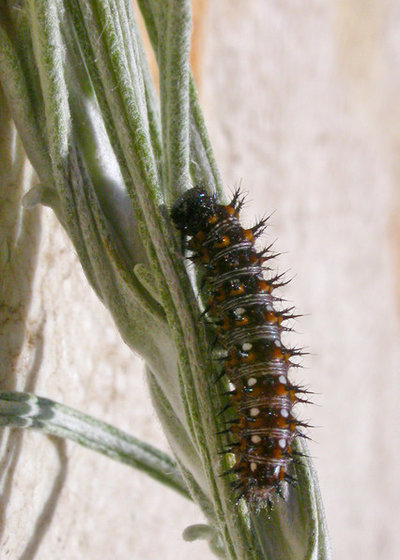
Holm Design & Consulting LLC
Caterpillars pupate, and the first-generation adults to emerge in the north become active in late June and July. These adults produce a second generation of caterpillars and later adults. It hasn’t been clearly documented whether these adults migrate southward in late summer to early fall or if they remain in the north but do not survive the cold temperatures. The northern populations are replenished the following spring, however, when adults migrate northward from the south.
Shown: A caterpillar stretches out on annual curry plant.





